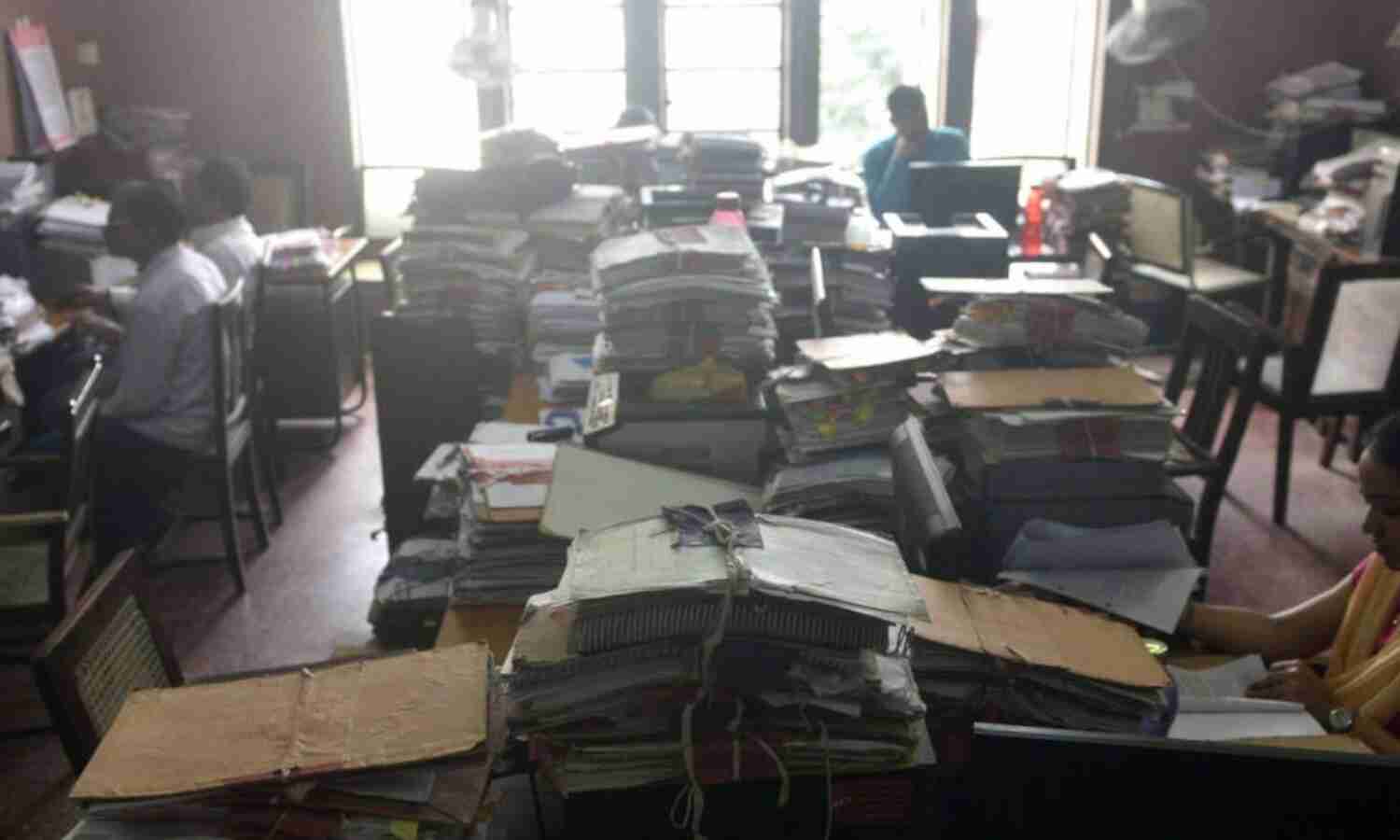Central Govt Expenses On Civilian Salaries Up 3 Times In A Decade, Vacancies Stay The Same

Mumbai: The central government’s expenditure on the salaries of civilian employees increased three-fold in 10 years between 2006-07 and 2016-17, even as nearly 500,000 posts remained vacant, on average, every year, according to government data.
“A poor country with weak state capacity like India, when confronted with the pressure to redistribute, had necessarily to redistribute inefficiently, using blunt and leaky instruments,” said the Economic Survey of 2016-17. State capacity refers to the government’s ability to utilise resources to deliver essential services, such as education and health.
Concerns regarding the quality of government services being affected due to understaffing were raised in the 2015 report of the Seventh Central Pay Commission, the committee to review and revise central government employee pay packages. For every 100,000 people, India had 139 central government employees--excluding employees of the railways and posts--compared to the US, which had 668 non-postal employees, the report said.
Understaffing is frequently manifest in protests and inefficiency.
Overworked doctors at the Centre-run Safdarjung Hospital demanded an increase in staff to extend out-patient department (OPD) hours, the Hindu reported on July 14, 2018. Similarly, the quality of teaching and research in central universities was affected because a third of teaching posts were vacant, IndiaSpend reported on August 16, 2018.
The central government has spent Rs 11 lakh crore ($160 billion), nearly twice Sri Lanka’s gross domestic product (GDP) in 2017 ($87 billion), on 3.2 million employees in 10 years to 2016-17; the expense rose 340%, from Rs 41,676 crore in 2006-07 to Rs 182,513 crore in 2016-17.
There were, on average, 500,000 vacancies in central government jobs over 10 years.
In 2006, of 3.5 million sanctioned posts, only 88% or 3.1 million positions were filled, a gap of 417,495 employees, the data show. In 2016, 89% or 3.2 million of 3.6 million were filled, a vacancy of around 412,752 employees.
Most vacancies were in group C (clerks and office aides) jobs, the data show. Of 3.2 million sanctioned posts in group C in 2016-17, 87% or 2.8 million were filled.
Vacancies of around 300,000-320,000 posts in group C alone are about three times the employees added (111,909) over 10 years.
Increase in employee pay scale, increase in expenditure
“To keep the salary structure of the employees viable, it has become necessary to improve the pay structure of their employees so that better, more competent and talented people could be attracted for governance,” said the report of the Seventh Central Pay Commission, which said government-employee salaries should be competitive with the private sector.
The expenditure on base pay increased 331%, from Rs 27,834 crore to Rs 120,002 crore, over a decade to 2017. Employees received 157% more in-hand cash, after the Seventh Central Pay Commission report and the hike in minimum wages (Rs 7,000 to Rs 18,000).
Dearness allowance (DA)--additional compensation to cover cost-of-living increases--accounted for a larger share of the pay structure (42%) than basic pay (36%) between 2011-12 and 2015-16. The trend changed in 2016-17, after the revisions recommended by the Seventh Central Pay Commission.
In 2016-17, basic salary formed 66% of central-government salaries, followed by DA (16%). House rent and other allowances made up the remaining 4% and 14%, respectively, according to the report on Pay and Allowance 2016-17.
Source: Final report of the 7th Pay Commission 2015; Annual Report on Pay and Allowances of Central Government Civilian Employees 2016-2017*
The department of science and technology, which funds research and development of science and technology associated with water, energy, health, environment, climate, agriculture and food, is running at less than half its capacity, from 37% vacancy in 2014 to 55% posts vacant in 2016.
Up to 49% posts are vacant in the civil aviation ministry, followed by the corporate affairs ministry with 44%.
The defence ministry had the most vacancies in 2016 with 187,054 posts (31%).
Overall, there appears to be a shortage of 25%-35% staff, on average, across 51 ministries, the data show.
To fill some vacancies, the central government is planning to employ professionals in senior management posts, such as joint secretaries, on contract across 10 areas.
Although there are no data on the number of contract employees, according to this November 2016 reply to the Lok Sabha (lower house of Parliament) by labour minister Bandaru Dattatreya, the central government was a major employer of contract workers, according to data released by the Seventh Central Pay Commission. The Centre spent over Rs 300 crore on contractual manpower in 2012-13.
As many as 43% of government employees held temporary jobs, according to the 2014 report by the Indian Staffing Federation, an organisation that covers regulations related to outsourcing of skills.
Update: An earlier version of this story said India has 139 central government employees for every 100,000 people compared to 668 in the US. The story has been updated to clarify that the figures do not include railway or postal employees.
(Chhetri, a graduate of Lady Shri Ram College for Women, is an intern with IndiaSpend.)
We welcome feedback. Please write to respond@indiaspend.org. We reserve the right to edit responses for language and grammar.


